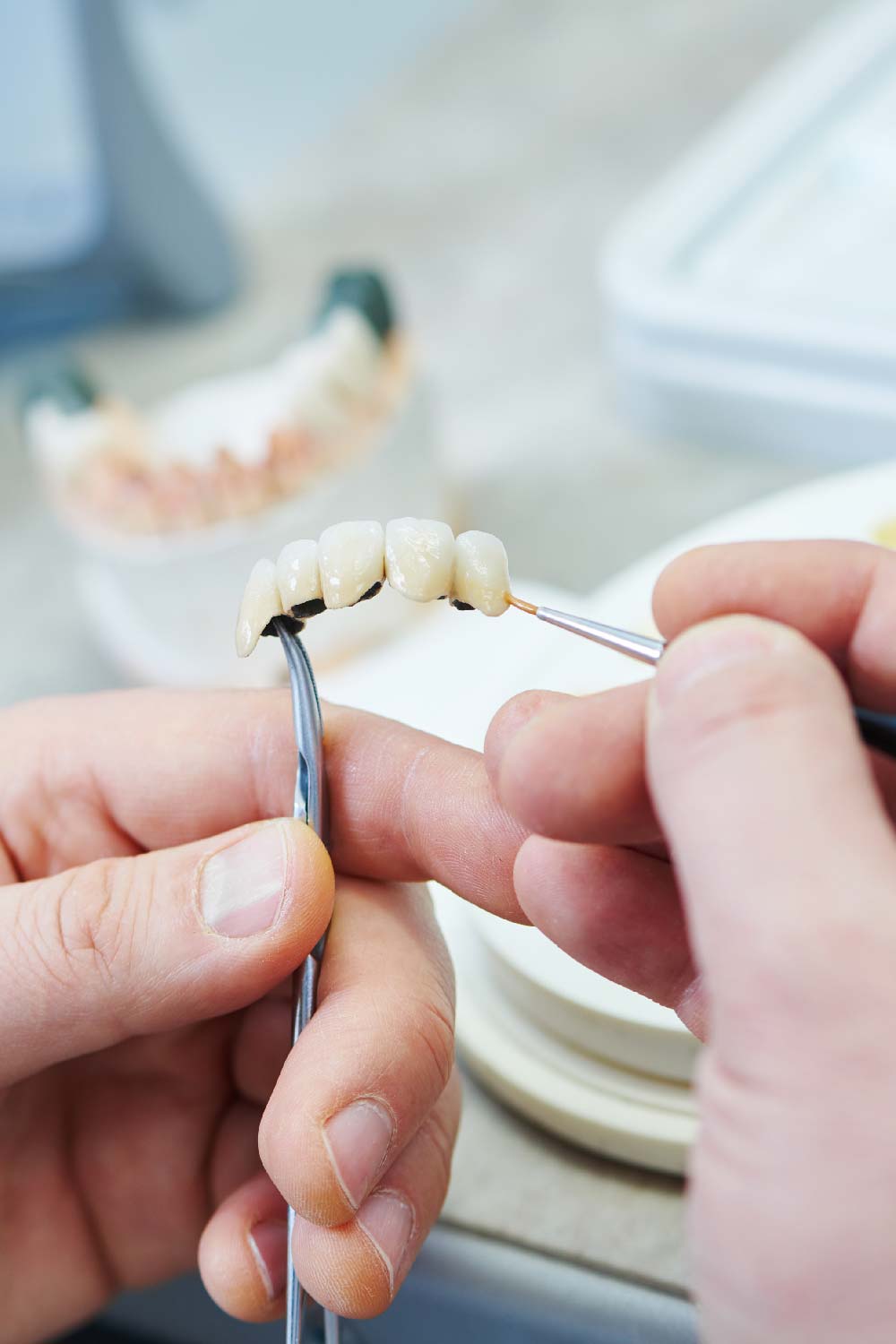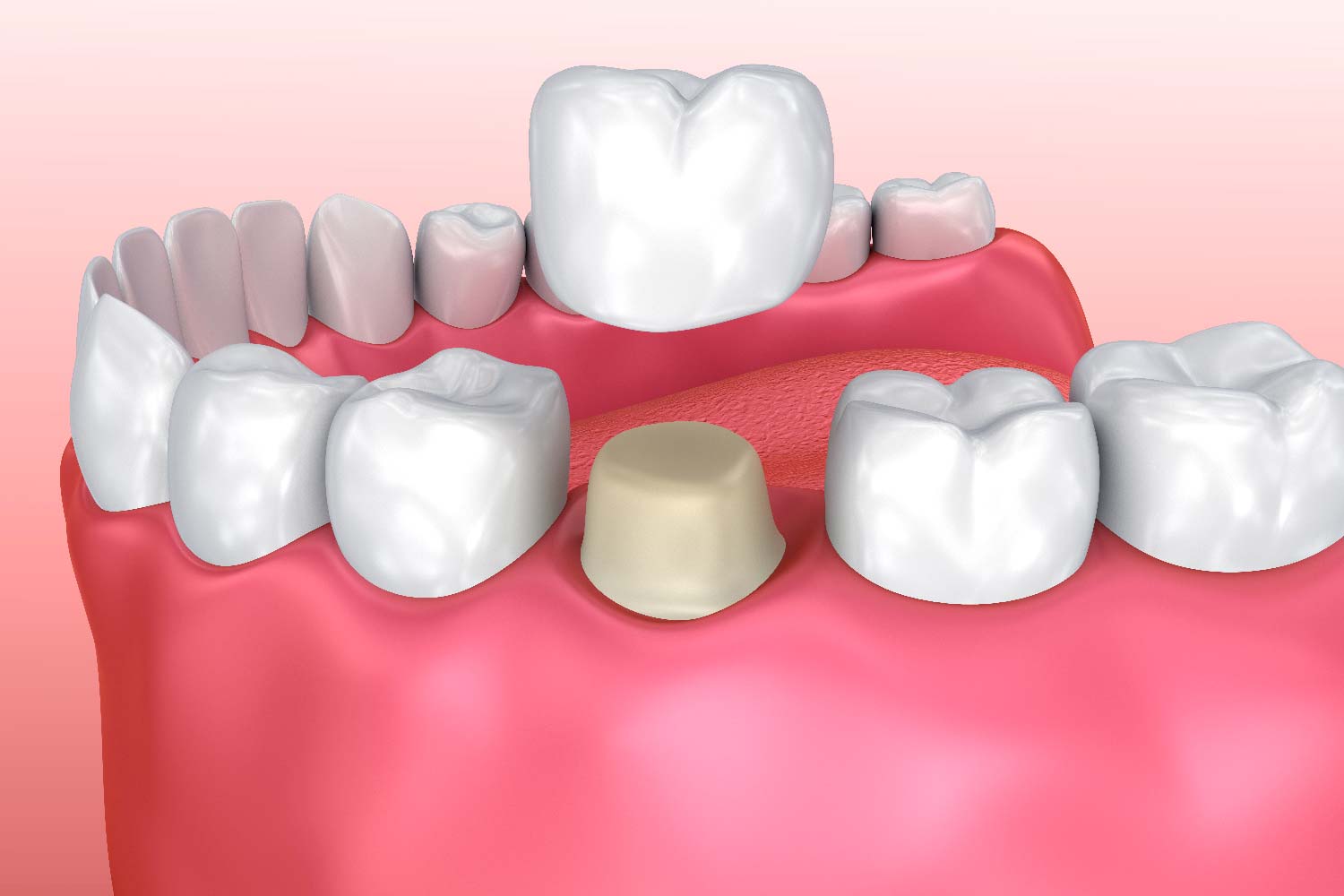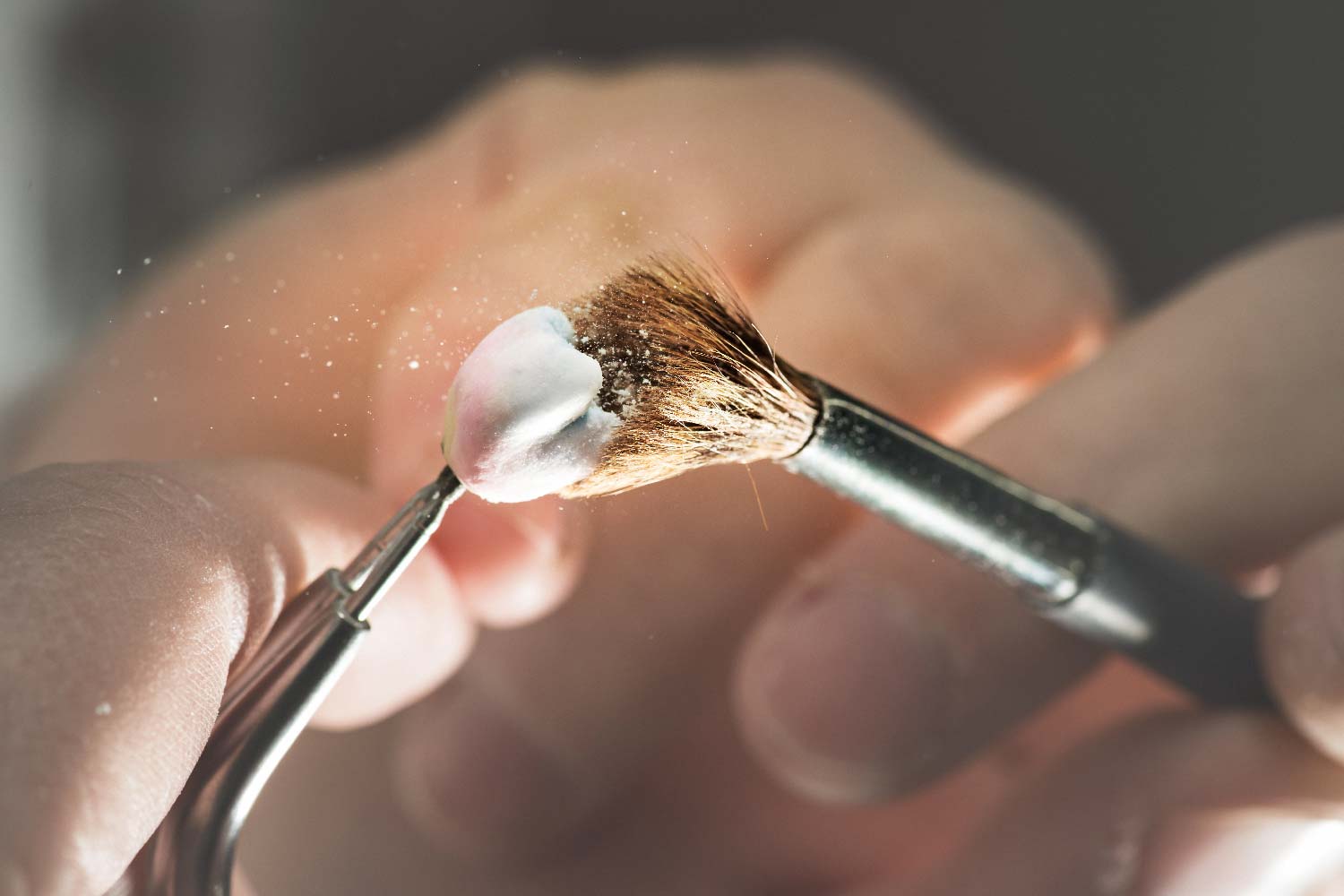Fixed and removable dentures

What is a dental prosthesis?
A dental prosthesis is an artificial artefact that replaces natural teeth when they are severely damaged and need to be extracted. There are different types of dentures that cover a wide range of clinical needs. However, there are three aspects that are fundamental to a dental prosthesis:
– Functional: it must correctly rehabilitate phonation and chewing.
– durable: it must last over time
– aesthetic: it must be as similar as possible to the patient’s natural teeth
In general there are two types of prosthesis: removable and fixed prostheses.
Mobile dentures.
The pros and cons of dentures
A removable prosthesis, or denture, replaces the entire set of teeth in one arch: this type of denture is removed by the patient to allow daily oral hygiene. It is most commonly used by elderly patients. Removable dentures can be partial or total:

Total removable dentures
This is the classic denture, indicated mainly for patients who have no teeth on one or both jaws. The denture consists of a resin support, which resembles the appearance of gums, on which teeth, also made of resin, are inserted. This type of removable denture has a suction cup mechanism which secures it to the patient’s arch and allows normal chewing.
In order to avoid discomfort, relining is very important: i.e. the replacement of the denture’s resin base which rests on the mucous membranes and which must be periodically reshaped by adapting to changes in the tissue: due to bone resorption and gum regression, in order to ensure its own efficient anchorage.
Partial removable dentures
Replaces one or more missing teeth and is anchored by clasps to residual natural teeth or implants. Partial removable dentures, also known as skeleton dentures, are fitted with a metal alloy frame that hooks onto the remaining natural teeth in the mouth, which act as a support.
When is partial removable denture used?
The skeleton is useful when, for clinical reasons (the most frequent being insufficient bone tissue), it is not possible to implant fixed prostheses and the patient still has some healthy teeth in the mouth.
The overdenture on implants
Dentures without the need for adhesives
In dentistry, the overdenture is a removable full denture anchored to titanium dental implants with a bar or spherical head. Thanks to the overdenture, the patient has the possibility to remove the prosthesis for daily dental hygiene and reposition it in the mouth in a completely stable and firm manner: ensuring safe chewing and perfect phonation.
Overdenture on mini dental implants and O-rings
Mini dental implants are smaller implant devices than real implants and therefore require less invasive procedures and are therefore suitable for older people unable to sustain a more invasive surgery.
The mini-implants, already fitted with a ball head, attach the overdenture with O-ring type connections. This type of solution can usually be completed within a day (including the insertion of the mini-implants) and without any particular discomfort for the patient.
Why overdenture?
The overdenture is a good solution for all patients who cannot, for anatomical reasons (lack of sufficient bone) or pathological reasons (due to disease), support the placement of real implants, but who find dentures unsuitable.
Overdenture on dental implants with bar
After the dental implants have been placed, they are joined together with a special bar that firmly secures the overdenture. In addition, a so-called “saddle” connector (just like a horse’s saddle) is provided, which will fit perfectly into the implant bar.
This solution is suitable for both the upper and lower arch.
Overdenture on spherical head implants
The overdenture on spherical-head implants provides that the screws or implants to be inserted into the bone are complemented by a spherical end. This end is screwed onto the thread at the top of the implant, thus securing the denture without the need for adhesives.
The patient’s denture has to be modified so that it can be integrated with the respective attachments, and the dentist then adds special connectors (clips) to the resin that serves as the base of the denture.
Fixed prosthetics: non-removable solutions similar to natural teeth
Fixed dentures replace teeth lost over time by adopting non-removable solutions that are aesthetically very similar to natural teeth. They are fixed because they are applied permanently, i.e. they cannot be removed by the patient because they are cemented to natural teeth or artificial roots. There are different types of fixed dental prostheses:
– individual dental capsules or crowns
– dental bridge
– dentures anchored on dental implants
If the outer surface of the tooth is damaged irreparably by tooth decay or other types of trauma, it is possible to reconstruct and strengthen the tooth using a dental capsule.


Dental implant
An implant is an artificial titanium root that is inserted into the jawbone or mandibular bone through surgery. Once the implant has been inserted, a period of time between 3 and 6 months must be allowed for proper integration with the bone. Following this process, a crown is placed on the implant: a shell that best replicates the colour and shape of the tooth.
Dental Capsule/Crown
The dental capsule or crown (artificial replacement of a single tooth) is a type of fixed prosthesis that requires a root: either a healthy natural root (tooth) or a titanium implant.
In the case of tooth extraction, the tooth is replaced with titanium posts: a metal capable of integrating with the surrounding tissue without rejection. Once the titanium implant has been inserted, an abutment is applied to support the crown.
If it is possible to keep the patient’s natural tooth, it is filed down to make an abutment to be inserted into the dental capsule. The crown is attached to the abutment either by cementing or screwing it in place.
Types of materials
There are different types of crowns made from different materials:
Zirconium ceramic, for example, is very resistant and insulates the underlying tissues very well from heat and cold; aesthetically, it gives the best results as it is a material that gives brightness to the restoration, perfectly simulating tooth enamel.
The all-ceramic used for the prostheses integrates easily with the surrounding tissue and simulates the appearance of natural teeth very well;
Metal-ceramic is a prosthesis in which the crown is made of two layers of materials, the inner metal and the outer ceramic. This type is particularly suitable for people who grind their teeth.
When is a dental crown recommended?
– Crowning is necessary in cases where the tooth cannot be restored by a simple filling because it is permanently compromised.
– A crown is also recommended in the case of devitalization, as devitalized teeth tend to weaken, increasing the risk of injury or chipping.
– Finally, the dental capsule is the most suitable solution for encapsulating an implant, or in the event of diseases that compromise the integrity of the enamel.

The dental bridge
A dental bridge is a restoration that replaces one or more missing teeth. It can be supported by natural teeth, a combination of natural teeth and implants, or only by implants. The missing tooth is replaced by a prosthesis, preventing the other teeth from becoming misaligned. It is also called a fixed bridge or fixed partial denture, and is permanently anchored to neighbouring healthy teeth.
A traditional bridge is made by creating a dental crown for each tooth on either side of the empty space, which is filled by the artificial teeth.
Crowns can be on natural teeth or on implants. Conventional bridges are made of metal-ceramic or all-ceramic.
Prosthetics on dental implants
Prosthetics on dental implants are a suitable solution when more than one tooth needs to be replaced in the dental arch.
The most popular are All-on-four and All-on-six implants.
Dental veneers or prosthetic veneers
New technologies have recently enabled the development of highly aesthetic solutions for other clinical cases that do not necessarily involve tooth loss: dental veneers or prosthetic veneers are very thin shells made of lithium disilicate, which are applied to the tooth surface without anaesthesia and without filing the tooth. Thanks to this prosthetic solution it is possible to correct:
– diastemas
– worn or yellowed teeth
– small teeth
– crooked teeth or teeth with significant colour differences
Dental veneers are prostheses in their own right as they allow rehabilitation at the level of chewing correction and are made in such a way as to replicate the natural tooth by significantly improving the appearance and shape of the original; finally, they are particularly resistant.

Write to us or call to book an appointment.
Where we are:
Viale Aventino 48, Roma
Contact details:
Tel. 06 5740768
Email: info@giancaspro.net
Mon. > Fri. 9:00 – 19:00
Lun. > Ven. 9:00 – 19:00
Wed. CLOSED
Sat. 9:00 – 14:00




